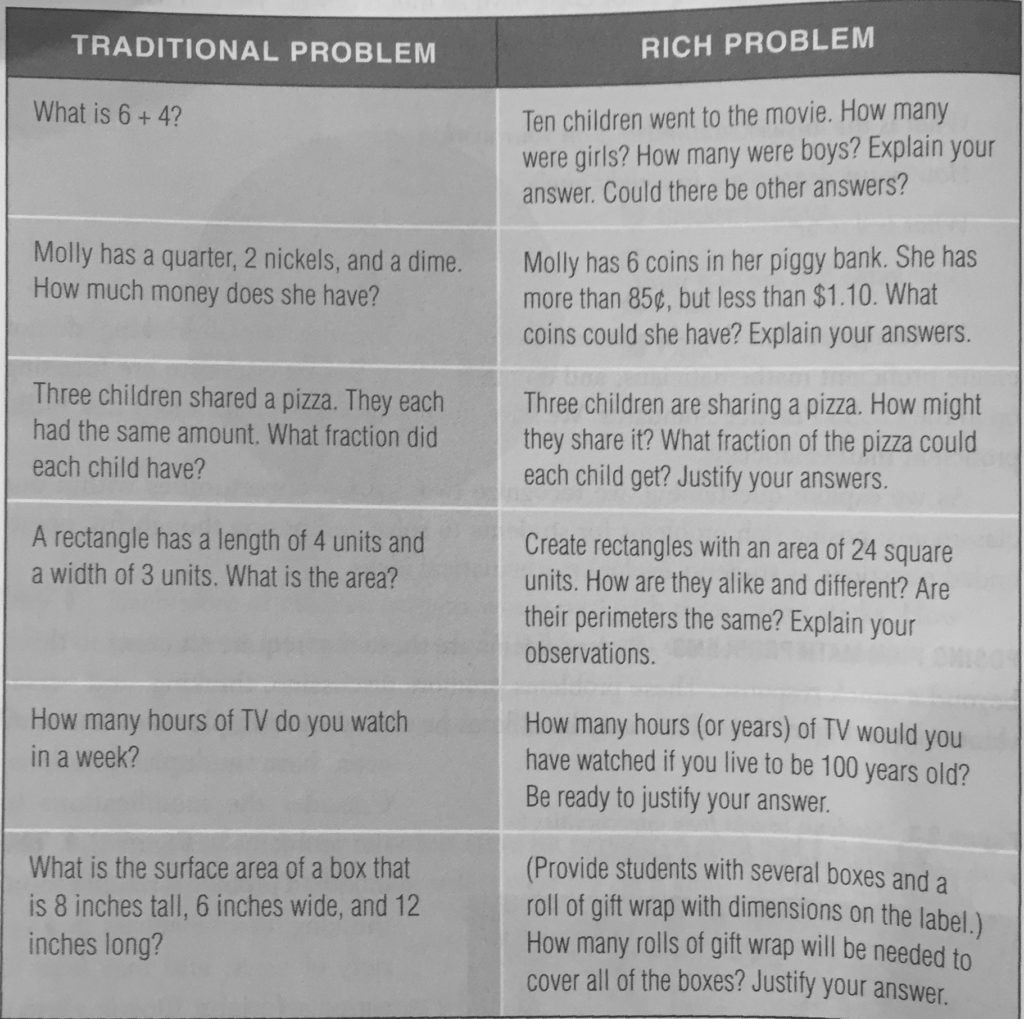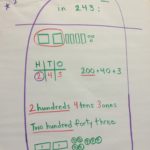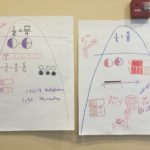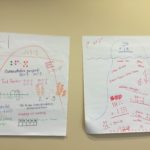This has been an exciting first day!
We started with the usual introductions, where you were greeted by Andrew Baxter, George Andrews, Yuxi Zheng, Matt Katz, Andrea McCloskey, and Fran Arbaugh. We talked about expectations and our objectives for this week, and then dove into the Kayak Problem.
In discussing our solutions to the Kayak Problem we discovered a few things about mathematics and mathematics teaching:
- There is more than one way to solve a problem, although often the ways to solve are related. Here we saw a list of +2s and +4s to represent the hours, a organized chart, an algebraic formula, and a graphical representation.
- There are advantages and disadvantages of these different methods, as some solutions make certain subtleties and patterns clearer than others. Ultimately students should develop proficiency in the efficient methods, but there is danger in knowing only those methods at the exclusion of mathematical understanding.
After a break, the participants took a pre-assessment. This was followed by a lunch hour.
After lunch Fran led a discussion about the reading you did before coming to UP: “Smarter Than We Think: Helping Students Grow Their Minds” by Cathy Seeley. She then shared three frameworks that ground our pedagogy work for PMI:
- What does it mean to know mathematics? We will draw on work presented in Adding it Up: Helping Children Learn Mathematics, which presents a definition of “mathematical proficiency” as being comprised of the following five strands:
Conceptual Understanding – comprehension of mathematical concepts, operations, and relations.
Procedural Fluency – skill in carrying out procedures flexibly, accurately, efficiently, and appropriately.
Adaptive Reasoning – capacity for logical thought, reflection, explanation, and justification.
Strategic Competence – ability to formulate, represent, and solve mathematical problems.
Productive Disposition – habitual inclination to see mathematics as sensible, useful, and worthwhile, coupled with a belief in diligence and one’s own efficacy.
Adding it Up can be downloaded for free at: http://www.nap.edu/catalog/9822/adding-it-up-helping-children-learn-mathematics
2. What kind of activity do students need to engage in to become mathematically proficient? We will draw on CCSS-M Standards for Mathematical Practice (found on page 8 of Principles to Action).
3. What kind of teaching practices support students to engage in the SMPs and become mathematically proficient? We will draw on the content of Principles to Action.
Next Matt kicked off Unit 2 on the Adjective-Noun Theme and Addition. We saw how in arithmetic situations, numbers are adjectives and we often omit (or forget) about the nouns. This can shed light on why our standard algorithm for addition works as it does, as well as give insight into why fractions need common denominators when adding and subtracting.
Last Andrew discussed models for numbers, their relative strengths and weaknesses, and how those models for numbers yield models for addition. We started on exploring even and off numbers, but we will pick up with that more tomorrow
HOMEWORK: One clarification: homework is not collected and graded or for anything other than deepening and solidifying your own learning. Homework problems are discussed the following day.
Math:
Page 1.5, Variations on the Kayak Problem. Solve problems 3 and 4. One you solved it one way, seek out another way to solve it.
Page 2.11, number 7. Woodchuck Valley Tennis Association Trophies. Make an attempt, although we will look at this in class in the morning.
Pedagogy
Read Principles to Action: Sections titled Progress and Change; Effective Teaching & Learning (Pages 1-12) and section titled “Implement Tasks that Promote Reasoning and Problem Solving” (pages 17-24).
- Reflect on a typical in-class math lesson (use your textbook to refresh your memory). Using the descriptions of Levels of Cognitive Demand in Figure 3 (p. 18), describe the types of mathematical thinking your students are required to engage in during a typical lesson.
- Reflect on a typical homework assignment that your students complete (use your textbook to refresh your memory). What level of cognitive demand do most of the tasks on a typical homework require of your students?










